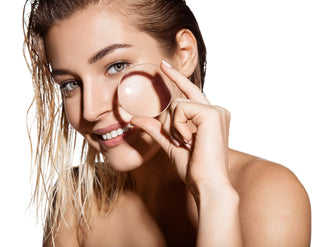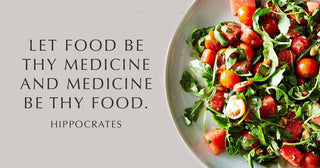Skin rejuvenation and nutrition go hand-in-hand. You can’t remedy your oily skin and acne with french fries, and you can’t prevent hyperpigmentation with pasta.
Summertime gives us long sunny days—the perfect conditions for premature aging caused by sun damage and pollution. Chronic effects of this damage can show-up as early as your 30’s—which is why sun care starts with babies, and a balanced skin care regimen should begin in teen years. It helps prevent premature aging of the skin and reduces the risk of some skin cancers.
As adults, preventing and correcting the visible signs of sun damage—dehydration, fine lines, discolorations—starts with your skin care regimen at home. Exfoliation, nutrition, and protection are the key elements to the ARC Skin Care regimen; ‘nutrition’ being the assortment of vitamins, essential oils, and plant extracts that collectively benefit your skin. These can be found in ARC cleansers, moisturizers, exfoliants, and serums.
Not all plant-derived skin care ingredients are suitable to eat, nor do they offer the same benefits internally as they do topically. However, scientists have discovered links between the foods we eat and the effects these foods may have toward preventing DNA damage and premature aging, while improving common skin concerns, like hyperpigmentation.
LEAFY GREEN VEGGIES
Another reason to love your vegetables! Dark green veggies, like kale, brussel sprouts, zucchini, broccoli, peas, and leafy-greens contain lutein and zeaxanthin—carotenoids that help protect the eyes from age-related vision loss, macular degeneration, and other disorders of the eyes. In the skin, these carotenoids help filter UV radiation to help reduce oxidative stress in the skin. Try Cookie & Kate's 12 Favorite Kale Salads >
RED FRUITS
Beneficial for cardiovascular health and helps prevent some types of cancer, lycopene is a carotenoid that gives fruits a red-pink color. It helps reduce oxidative stress that contributes to DNA damage and can be found in tomatoes, pink grapefruit, watermelon, papaya, and guava. Try Home Made Nutrition's Papaya, Avocado, and Citrus Salad recipe >
ORANGE-PINK AQUATIC LIFE
The title sounds a little odd, but the carotenoid found in most red-colored creatures, including algae, shrimp, lobster, crabs, red trout, and salmon, astaxanthin has been touted as a stronger/longer-lasting antioxidant thatn lutein and lycopene, and it’s both water and fat soluble. It helps protect your skin from the inside-out by scavenging free radicals and reducing inflammation. Try Kitchenista's Pan-Seared Steelhead Trout recipe >
GRAPES AND GREEN TEA
Proanthocyanidins (found in grape seeds), epigallocatechin-3-gallate (found in white and green tea), reservatrol (found in grapes, blueberries, cranberries, dark chocolate, peanuts and pistachios) have demonstrated clear anti-cancer effects toward melanoma—one of the deadliest forms of skin cancer. All of these should be easy to incorporate as a mid-afternoon snack.
Age prevention is a lifestyle and not a fad. If you want to have beautiful, healthy-looking skin and prevent premature signs of aging, eat well, protect your skin from sun damage and pollution, and talk to your skin care provider about pre-rejuvenation treatments that will help you achieve your long-term goals.
REFERENCES:
L. Ferguson, H. Chen, A. Collins, M. Connell, et. al. Genomic instability in human cancer: Molecular insights and opportunities for therapeutic attack and prevention through diet and nutrition. Seminars in Cancer biology. Volume 35, Supplement, December 2015.
L. Tong, L. Young. Nutrition: The future of melanoma prevention? Journal of the American Academy of Dermatology. Volume 71, Issue 1, July 2014.



